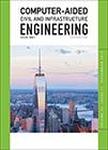版权所有:内蒙古大学图书馆 技术提供:维普资讯• 智图
内蒙古自治区呼和浩特市赛罕区大学西街235号 邮编: 010021

作者机构:Univ Nottingham Fac Engn Resilience Engn Res Grp Nottingham NG7 2RD England Univ Granada Dept Struct Mech & Hydraul Engn Granada Spain
出 版 物:《COMPUTER-AIDED CIVIL AND INFRASTRUCTURE ENGINEERING》 (计算机辅助土木和基础结构工程)
年 卷 期:2019年第34卷第4期
页 面:281-298页
核心收录:
学科分类:08[工学] 0813[工学-建筑学] 0814[工学-土木工程] 0812[工学-计算机科学与技术(可授工学、理学学位)] 0823[工学-交通运输工程]
基 金:Lloyd's Register Foundation [RB4539] Engineering and Physical Sciences Research Council [EP/M023028/1] EPSRC [EP/M023028/1] Funding Source: UKRI
主 题:Imprecise knowledge train load monitoring data computational procedure Railway track Expert System self-adaptive State variable maintenance activities external input Petri nets Computational modeling
摘 要:This article provides a computational framework to model self-adaptive expert systems using the Petri net (PN) formalism. Self-adaptive expert systems are understood here as expert systems with the ability to autonomously learn from external inputs, like monitoring data. To this end, the Bayesian learning principles are investigated and also combined with the Plausible PNs (PPNs) methodology. PPNs are a variant within the PN paradigm, which are efficient to jointly consider the dynamics of discrete events, like maintenance actions, together with multiple sources of uncertain information about a state variable. The manuscript shows the mathematical conditions and computational procedure where the Bayesian updating becomes a particular case of a more general basic operation within the PPN execution semantics, which enables the uncertain knowledge being updated from monitoring data. The approach is general, but here it is demonstrated in a novel computational model acting as expert system for railway track inspection management taken as a case study using published data from a laboratory simulation of train loading on ballast. The results reveal self-adaptability and uncertainty management as key enabling aspects to optimize inspection actions in railway track, only being adaptively and autonomously triggered based on the actual learnt state of track and other contextual issues, like resource availability, as opposed to scheduled periodic maintenance activities.